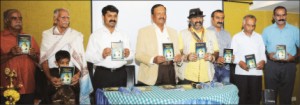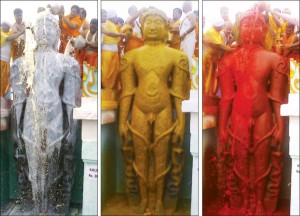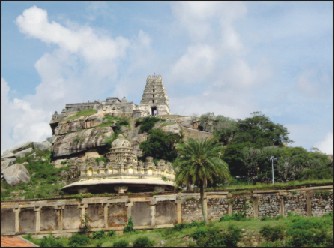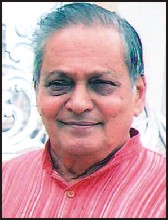Bangalore :
Entering the Realm of Dance
My father Hattangady Sanjeeva Rao, a reputed architect, was so bowled over by Uday Shankar’s performance that he wanted to encourage learning dance in our house too. However, this excitement of his was unfortunately not for me. As mentioned earlier, like all young girls, I too was taught music, Hindustani vocal and the dilruba, but dance was strictly taboo!

My music guru, Rama Rao, introduced Sohan Lal to our family. Sohan Lal was a Kathak exponent from Jaipur who was then working in Bangalore for Ram Gopal. Ram Gopal, a renowned dancer, had a studio in Benson Town in which experts from various styles of dance taught as well as performed. Sohan Lal was in charge of the Kathak Section.
Sohan Lal was requested by my parents to teach my younger sisters Uma and Chitra, who were then six years and four years respectively. I was twelve years old, considered too old and so not allowed to learn dance. My brother Ramesh was allowed to dance and was even part of Sohan Lal’s troupe. I was totally smitten and it took me two years to persuade my father to let me dance as well.
Two years later, I was allowed to learn dance with a promise that I would not dance professionally or perform on stage, a promise that I fortunately did not keep! I enjoyed studying dance immensely and requested Guru Sohan Lal to teach me some unique items, as I was not satisfied with the popular dance sequences that he taught others like Kite Dance, Radha Krishna and Snake Charmer. Sohan Lal taught me The Birth of Music using the shadow technique and Usha, an abstract piece in nritta on the theme of dawn. The Birth of Music had a complicated set up. My resourceful mother, Subhadra Bai, sewed twelve bedsheets together to create a screen large enough for the show! I practised assiduously behind the screen, being careful not to distort my shadow image. Sohan Lal adapted linear movements and paid great attention to spacing. After labouring for six months, we presented it just once, that too solely for a Saraswat Samaj community occasion at the Town Hall in 1944.
But these performances were important. They were my first brush with choreography. My mother supported my passion for dance despite societal resistance. She had great aesthetic sensibility and encouraged me by stitching costumes, hosting the rehearsals, tolerating the nakhras of the musicians and all this alongside her household chores. I wonder how she managed it, despite being educated only till middle school; she was popular in our community for her profound wisdom.
In 1946, we lost my father. He was cheated by his business partners and incurred massive financial loss. This affected his health, which rapidly deteriorated and he passed away. Our palatial family home, Sanjeev Villa, was auctioned in a year and we became tenants of a one-room house. At that juncture, my bother, Manohar and I took charge of sustaining the household. The same dance that was once forbidden turned out to be our source of livelihood, I started teaching dance and I was all of seventeen.
Choreographic Netramilan
While in Maharani’s College, some of us interested in dance formed a club where we would present modest dance-dramas. We created a college fund for students who came from economically challenged backgrounds for which we organised cultural programs to raise funds. For one such event, we wanted to perform “Sita Haran” where our only guides were Max Muller’s translation of the Ramayana and Bharata’s Natyashastra. I would sit for hours and study mudras to compose the dance-drama.
Sita Haran was to be premiered in Town Hall but the musicians did not show up. We were all completely distraught. Our Principal felt sorry for us as we were sitting helplessly, all dressed up and in tears! As luck would have it at that moment, M S Natarajan breezed in with his Saraswathi Orchestra in tow, wafting the fragrance of expensive cologne. Tall, handsome with an imposing personality, he was playing for one of our friends, Sundara Malaradhya, who sand movie songs. Our Principal requested Natarajan to help us, and he magnanimously agreed. We had a rushed half hour rehearsal in the green room after which we presented the programme on the stage. To our surprise, it was a huge success.
This is how Nataraj and I came to meet one another. You can call it a “choreographic netramilan”! Both Nataraj and I had the same position for the arts and were on the same wavelength. He was eight years older than me and already a reputed music director who worked with the likes of Ram Gopal, U S Krishna Rao, Chandrabagha and Mrinalini Swaminathan (now Sarabhai). Nataraj’s Saraswathi Orchestra was South India’s first and largest oprchestra and it was created by him by bringing together all young vidwans of that time.
Natya Meets Saraswathi
Around 1947, Nataraj and I set up the Natya Saraswathi Dance and Music Centre. We chose the Natya Saraswathi figurine from the ancient temples of Belur as our logo. Dance was till not too popular with the respectable families and they would not readily send their daughters to learn the art. Even the tuition fee was small, parents were reluctant to let their children learn this art form. We managed to get a small space at the Canara Union where a lot of children from the Saraswat families joined the class. I was not interested in just teaching the regular ta thai thei tat combined with just the technique of Kathak; I was keen on understanding what would interest children. I therefore selected fairy tales to render them as ballets. Some of these were Charu Chanda based on the fairy tale of Hansel and Gretel and The Song of the Colours based on Taj Mohammad’s Persian poem of the same title.
Nataraj knew many renowned writers and musicians. He introduced T R Subbarao to us, known popularly as Ta. Ra. Su. who wrote the lyrics for our ballet. And another famous musician, Vidwan Mysore Subba Rao, scored the music. Back in mid-1949, we were all into small productions. We even presented children’s productions in Victory Hall (Bal Bhavan). Those days were hectic as I was simultaneously experimenting with choreography as well as studying.
Dancing with Maharaj
I must mention my debut with Maharajji, which was quite eventful. This was in 1955, at the National Film Seminar, with Devika Rani as the convener. It was attended by luminaries of Indian cinema like Raj Kapoor, Nargis and others. Shambu Maharajji was asked to perform for a twenty-minute slot. Nirmalaji thought if he danced alone he would take a lot of stage time, as his practice was to take the entire evening for a routine performance. Even when he won the Akademi award, all the awardees were given half hour slots to perform and a cautionary red light would blink five minutes before the finale but Maharajji ignored it completely and continued! Nirmalaji suggested that he perform a duet, Niratat Dhang, a composition by Maharaj Bindadin in which the salient features of Kathak are visualised in Krishna’s dance with the gopis. Maharajji very graciously offered to have me as his dance partner. I barely had two months of training!
I was excited and nervous at the same time because our accompanying artists were all stalwarts in their own fields like the Dagar Brothers singing, Ustad Ishtiaq Ahmed Khan Saab plating the sarod, Ustad Ghulam Sabir the sarangi, Shanta Prasadji and Prem Vallabhji on the tabla and pakhawaj respectively. You can imagine my condition amidst all these big names! It was a wonderful opportunity but I was so scared. Maharajji said, “Tum ham ko dekho, ham tumko dekhenge, bhagwan ham donon ko dekhenge.” In this programme, we were performing a gat bhav on Indra Kop, a famous tale from Krishna Lila repertoire. We were portraying the story in gat bhav, where each of us was representing more than one character. Maharajji as Krishna was so involved in this that at one point when he started his tatkar, everyone from the audience cheered him saying “Wah! Wah!” So he promptly forgot his character and started performing virtuoso Kathak instead and would not stop! I did not know what to do. I took two paltas, exited and waited in the wings.
(Excerpted with permission from ‘Maya Rao – A Lifetime in Choreography’. Call 2334-8645 for details.)
source: http://www.newindianexpress.com / The New Indian Express / Home> Cities> Bangalore / by Maya Rao / September 02nd, 2014









